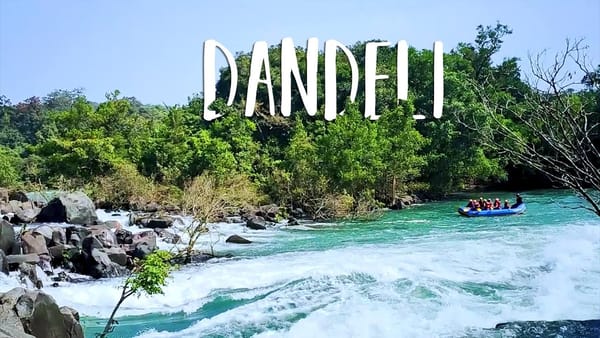10 Reasons to Connect Students with Wildlife on School Trips

How can encountering wildlife firsthand enhance a student's understanding of biology and ecology? Why is it important? Encouraging students to develop a deeper interest in wildlife is not only beneficial for their personal growth but also crucial for the future well-being of our planet.
As we're all aware, Wildlife plays a fundamental role in maintaining the delicate balance of ecosystems and understanding its importance is vital for the generations to come.
Students who develop a passion for wildlife become advocates for endangered species, raising awareness about their plight and advocating for their protection. They also recognize the significance of preserving and restoring habitats, as healthy ecosystems are essential for the survival of various species.
Talking about careers, the field of wildlife offers a wide range of professions that allow individuals to work towards preserving and studying the natural world. Students with a passion for wildlife can pursue careers as
- Wildlife biologists - Conduct research on animal behavior, habitat conservation, population dynamics.
- Ecologists - studying the interactions between organisms and their environment, or conservationists, working to protect and restore endangered species and ecosystems.
- Range Forest Officers - play a crucial role in managing protected areas and educating visitors about wildlife conservation.
- Environmental educators - inspire and educate others about the importance of biodiversity and sustainable practices.
To know more about careers in wildlife, click here.
Embracing an interest in wildlife can have profound effects on emotional well-being and foster a deeper connection with the natural world. Wildlife encounters evoke a range of emotions, from awe and wonder to empathy and compassion. The sight of a majestic eagle soaring through the sky or the gentle presence of a deer in its natural habitat can evoke a sense of awe and wonder, instilling a deep appreciation for the beauty and diversity of life.
Let us talk about 10 out of the many ways in which students can get closer to wildlife. It can be accomplished via school trips or other recreational activities.
1. Nature Walks and Hikes
Students can explore local parks, nature reserves, or wilderness areas through guided nature walks or hikes.
Takeaways : These activities provide opportunities to observe wildlife in their natural habitats, learn about their behavior, and appreciate their interactions with the environment.
2. Wildlife Photography
Encouraging students to try their hand at wildlife photography allows them to capture moments of natural beauty and develop a deeper connection with wildlife.
Takeaways : They can practice patience and observation skills while learning about the habitats and behaviours of different species.
3. Birdwatching
Birdwatching is a popular and accessible activity that students can engage in both individually and in groups.
Takeaways : They can learn to identify various bird species, their calls, and migration patterns.
4. Volunteering at Wildlife Sanctuaries
Many wildlife sanctuaries and rehabilitation centres offer volunteer opportunities for students.
Takeaways : By assisting in the care and rehabilitation of animals, students gain hands-on experience, learn about conservation efforts, and develop a deeper appreciation for wildlife.
5. Citizen Science Projects
Students can participate in citizen science projects, such as bird counts, butterfly monitoring, or wildlife surveys.
Takeaways : These projects allow students to contribute to scientific research and conservation efforts while learning about different species and their habitats.
6. Wildlife Conservation Internships
Students can explore internships with wildlife conservation organizations, research institutions, or environmental agencies.
Takeaways: These internships provide valuable practical experience, working alongside professionals and contributing to meaningful projects focused on wildlife conservation.
7. Nature-Based Education Programs
Students can participate in nature-based education programs offered by schools, environmental centers, or organizations.
Takeaways : These programs often include hands-on activities, field trips, and workshops that focus on wildlife observation, habitat restoration, and environmental education.
8. Online Resources and Webcams
Students can utilize online resources, such as websites, blogs, and educational platforms, to learn about wildlife and access live webcams in natural habitats.
Takeaways : These platforms provide virtual experiences and insights into the behavior and daily lives of various species.
9. Animal Rehabilitation Centers
Visiting animal rehabilitation centres or wildlife rescue facilities provides students with opportunities to observe and learn about the care and rehabilitation of injured or orphaned wildlife.
Takeaways : These visits can inspire empathy and deepen their understanding of the challenges faced by wildlife.
10. Community Engagement
Students can actively engage with their local communities to raise awareness about wildlife conservation. Not only that, it helps them study their local ecology and develop interests into partaking with NGOs with environmental causes on their drives and campaigns.
By increasing their interest in wildlife via these field trips or activities, students not only enrich their emotional well-being but also deepen their connection with the world around them, fostering a sense of harmony and appreciation for the wonders of nature. To read more content like this, subscribe to our blog. We release a new insightful article every week!



